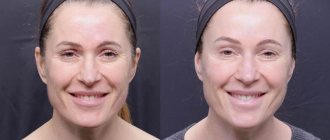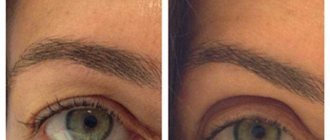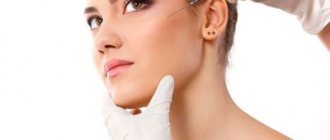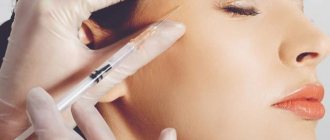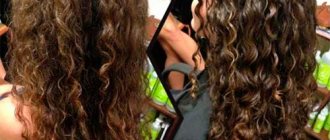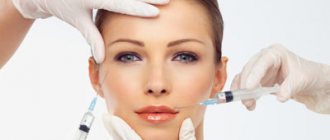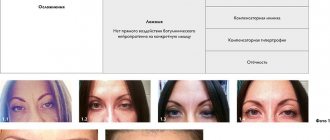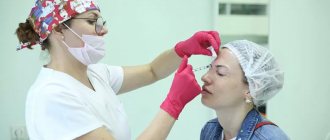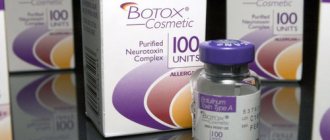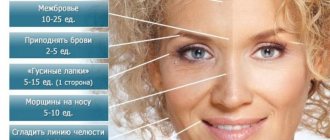Lip augmentation and correction are two very popular procedures that are performed using so-called invasive methods, that is, with penetration into the body tissues, into the skin and partially under it. Recently, Botox has been increasingly mentioned in this regard, but this drug has its own characteristics. And the first is that it makes absolutely no sense to associate it with lip augmentation. To change the shape and size of the lips, there is a completely different group of drugs, so-called fillers based on hyaluronic acid.
History of creation, composition of the drug -
Botulinum toxin is an exotoxin produced by a bacterium called Clostridium botulinum. In very large dosages, this toxin causes a nervous system disease known as botulism. To date, 7 types of botulinum toxin have been described (A, B, C1, D, E, F, G), which can have different molecular weights of 150, 500 or 900 kDa. We will tell you further what this affects, but in cosmetology botulinum neurotoxin type A is most often used, and type B is much less common.
Botox is the very first drug based on botulinum toxin, which was developed back in the 1970s. During this period, it was used only in ophthalmology - for the treatment of strabismus, nystagmus and blepharospasm. In 1989, the first publications appeared on the use of the drug to correct facial asymmetry caused by facial paralysis. It was only in 1990 that the first article was published where Botox® was used specifically for facial wrinkles. In 2002, the drug received official approval from the FDA (Federal Bureau of Drug Quality Control in the United States) for use in cosmetic purposes.
The origin of the word Botox is related to the term "botulinum", which means "sausage". This is due to the fact that at the beginning of the 19th century, the German doctor Kerner J. described the clinical manifestations of botulism, a disease that the doctor associated with the consumption of low-quality sausages in the German army. Subsequently, the pathogenic bacterium that causes this disease was identified. It was named Clostridium botulinum.
Method of obtaining the drug –
To produce Botox®, cultures of the bacterium Clostridium botulinum are used, which undergo autolysis to release a neurotoxic protein complex (botulinum toxin type A with a molecular weight of 900 kDa). Next, the resulting toxin is purified from the bacterial environment, then it is dissolved in human blood plasma albumin, dry-frozen and packaged in a container. 1 package of this drug will contain 100 units of botulinum toxin type A.
The method for obtaining Botox® analogues is very similar. Analogues of Botox include drugs such as Dysport, Myoblok, Xeomin, Botulax and others. In table 1 you will find the distinctive characteristics of all 5 most commonly used drugs. You will probably immediately notice that the drugs contain botulinum toxin of different molecular weights, which, according to many authors, is one of the factors influencing the degree of diffusion of the solution in tissues.
Table No. 1 –
In addition, all drugs differ in the content of serum albumin and non-toxic complexing proteins. It should be noted that the lower their content, the lower the likelihood of occurrence, as well as the severity of the immune response. The latter should be understood as the production of antibodies that neutralize botulinum toxin, which will lead to a decrease in the severity of the therapeutic effect (this should be especially taken into account when using the drug repeatedly).
An important point is the discrepancy between the units of botulinum toxin from different manufacturers (in terms of potency). 1 unit of botulinum toxin is a dose that is lethal to 50% of mice (LD50) of certain species that are used by the manufacturer of the drug in their studies. The problem is that different manufacturers use different species of mice for testing, and this leads to the fact that 1 IU of botulinum toxin from one brand does not correspond to 1 IU of another brand. For example, for a person weighing 70 kg, the LD50 index of Botox is from 2500 to 3000 IU, while only 20-75 IU of the drug is used for cosmetic purposes at a time.
All this leads to the fact that the strength of 1 unit of botulinum toxin from different manufacturers is unequal. For example, for Dysport and Botox injections, the price per unit will always be in favor of Dysport (it will always be cheaper, because 1 unit of this drug is 3 times weaker than 1 unit of Botox). Therefore, if the doctor recommends that you give 20 units of Botox injections, for example, for crow’s feet in the eye area, then the dose of Dysport equivalent to this amount will be 60 units. You can find a detailed analysis of prices for botulinum toxin injections below.
The nuances of applying Botox
- Selecting points. There is no rigid scheme, and you have to focus on the epicenter of wrinkles. Instead of the classic 4-point pattern, we usually work with 2 points, slightly shifting them towards the middle of the lip.
In addition to reducing the risks of the procedure described above, this gives a small beautiful upward inversion of the center of the lip ( small !!!) - that is, the lip is slightly closer to the shape of a heart and becomes more attractive. The change is small and we couldn’t catch it in the photographs, but the patient himself sees it and most people like it. - Dose selection. This is individual. The dose should not be large, only a few units, but exactly how much is needed is decided each time, based on the facial activity of the lips - because it can change over time, even in the same person. Experience helps.
- The injection should be superficial and just above the contour of the lip, there is no need to move towards the nose.
Instructions for use of Botox® –
It is the very first drug based on botulinum toxin. The correct and full name of the drug is Botox® Cosmetic. Available in bottles containing 100 units of botulinum toxin type A. The drug is manufactured in California (USA). This is a very technological company, known among doctors all over the world.
Breeding and storage are very important points, because significantly affect the therapeutic effectiveness of the drug. There is no consensus on this issue, but most leading experts recommend a 2.5-fold dilution of botulinum toxin in standard bottles of 100 units (for this, 2.5 ml of sodium chloride solution is used). However, when the cosmetologist requires a lower degree of diffusion of the solution in the tissues (at the same time as a higher concentration of the toxin), a dilution of 100 units in just 1.0 ml of sodium chloride can be used.
Table No. 2 – (ratio of dilution and number of units in 0.1 ml)
Dilution is carried out with 0.9% sodium chloride solution. The solution is available in 2 versions - with and without preservatives. Most doctors use a solution that contains preservatives. The fact is that benzyl alcohol, which is also a weak anesthetic, usually acts as a preservative. In this case, the injections will be less painful (24stoma.ru). For dilution, 1 or 3 ml syringes (with a 21G needle size) containing sodium chloride solution are used.
When introducing the solvent into the vial, the solution should flow slowly, without the formation of bubbles or foam, because analysis of a number of scientific publications shows that this can lead to denaturation of the toxin and a decrease in the effectiveness of the procedure. There is a vacuum inside the unopened bottle, and therefore, when a needle pierces the rubber stopper (which must first be treated with alcohol), the solvent solution should be automatically sucked out of the syringe. If the solution is not automatically sucked in, the bottle cannot be used.
Do not shake the bottle or try to pump out foam or air bubbles with a syringe, because this can lead to denaturation of the toxin molecules. After introducing the solvent, the bottle can only be rotated around its axis, achieving homogeneity of the solution. The solution must be transparent, colorless, and free of inclusions. According to the instructions, the time for using the diluted solution is only 24 hours (in a refrigerator, at a temperature of 2-8 degrees Celsius).
Features of application –
The calculation of the dose of botulinum toxin depends on the type of facial muscles, their severity (power), as well as the wishes of the patient. For example, a patient may want to achieve an immediately pronounced or light natural effect. A safe single total dose of Botox should in any case not exceed 100 units. It is unacceptable to make repeated injections at the same dose after a short period of time, however, correction of the result with minimal doses can be carried out after about 3-4 weeks.
Reviews for Botox injections for the face are often positive when the cosmetologist works according to the principle of “soft correction” adopted in Europe. This principle means that only minimal doses are administered to the patient at initial presentation to maintain a natural appearance. And only 3-6 weeks after this, a second examination is carried out, during which a decision is made about the need for a small correction by introducing another small amount of the drug. This allows you to avoid the state of a “frozen mask” on the face and increases the patient’s final satisfaction from visiting a cosmetologist.
→ Botox official instructions for use
Reviews
Yulia, 40 years old, Saratov
“I would like to share with everyone my experience regarding Botox around the lips. I've been having wrinkles around my mouth for a long time now. And a friend recommended me one good clinic in our city. She said that there was an excellent specialist there who helped her neighbor fix the same problem. I made an appointment with him, although I was very afraid of it (I can’t stand pain). And I have to admit that I was satisfied with everything. The procedure was almost painless; before the procedure, the doctor treated the areas into which injections were then made - just a few injections. Everything lasted about half an hour. After the procedure, the lips became smoother and softer, and wrinkles began to gradually disappear after 4 days. And two weeks later they disappeared completely. So know that Botox is a great thing. I recommend it to everyone!”
Katya, 37 years old, St. Petersburg “I used to always mistakenly think that with the help of Botox they increase the volume of the lips. And I was very surprised when I found out that this was not so. I have had wrinkles for a long time. But every woman dreams of getting rid of them. And I'm no exception. I found out that a girl cosmetologist started working in the salon where I work 3 months ago. My manicurist told me that she fixed her upper lip wrinkles with Botox. I found out everything about this cosmetologist (licenses, certificates, etc.) and made an appointment with her myself. Everything went perfectly. There were no complications or problems. Within a week and a half or two, I was showing off without my wrinkles around my lips.”
Inna, 50 years old Moscow
“I have resorted to Botox injections more than once, and I do not regret it at all. After all, I’m already 50 years old, and, unfortunately, I have a lot of facial wrinkles. But thanks to Botox, this is not a problem at all. This drug perfectly eliminates absolutely all wrinkles above the upper lip. Its effect lasts about five months, but the wrinkles do not return immediately, but appear gradually and by the end of 6-7 months you have to go to the doctor again. This procedure is almost painless for me, since the doctor treats the injection sites with a special cream. The most unpleasant thing is to remember that after the procedure you should never bend over! And 4 hours! But I really maintain a vertical position all 6 times - just in case, that’s all - then you can lead your normal lifestyle.”
Elena, 42 years old, Voronezh “I first heard about the effects of Botox five years ago, and I always wanted to try it, but I didn’t dare. But now I read more about it on the Internet, read a lot of positive reviews, and decided to try it. I found a good clinic. First, my doctor gave me a test to determine if I had any allergic reactions to this drug. Everything turned out to be fine. Then he made me purse my lips, make grimaces, marked with a marker the places where he would inject, and very quickly made a series of injections - it felt like mosquito bites. Everything took exactly 5 minutes, then I stayed in the clinic for about 30 minutes under the supervision of a doctor. The effect began to appear on the third day, and after two weeks the wrinkles above the lip were gone! And now I’m 40, but I look 25. I recommend this miracle drug to everyone.”
Nastya, 45 years old, Krasnoyarsk
“I have resorted to Botox more than once, and I recommend it to everyone. This is an excellent drug. I am 45 years old and have had wrinkles around my mouth for a long time. A friend recommended me a good cosmetologist. She herself once eliminated facial wrinkles with Botox. So I went to her. The whole procedure does not take much time. It was a little painful, but tolerable, since the cosmetologist had previously treated the areas of the skin where injections were then made with a small needle. After the procedure, they explained to me what was possible and what was not, I followed everything, but the wrinkles did not disappear after two weeks, they were finally smoothed out only after the repeated procedure.”
Sveta, White Eagle “I received an injection of this drug into the area around my lips about two months ago. And since then I have been very pleased. The effect began to appear at the end of the first week. Wrinkles in the corners of the lips disappear especially quickly - and they are the most disgusting ones - they make your mouth look like an old woman! Maybe it’s just me, but the skin of the lips is smooth, and there are no wrinkles around the mouth at all. True, at first my lip felt numb and it was uncomfortable to talk, but everything gradually went away.”
Katya, Voronezh “I have used Botox more than once, and I advise everyone to do the same. The drug perfectly helps to get rid of vertical wrinkles above the upper lip. You just need to find a good clinic and an experienced doctor, because Botox is still a poison, and there are known fatal cases after its administration, caution in choosing is simply necessary!”
Botox or Dysport: which is better, reviews
The main analogue of Botox is the drug Dysport®, which also contains botulinum toxin type A. This drug is produced (Great Britain). Dysport is an analogue of Botox both in its mechanism of action and in its indications for use. However, in terms of potency, units of Botox and Dysport are not equivalent, and according to various sources, 1 unit of Botox is equivalent to approximately 2.5-4 units of dysport. However, most clinical studies suggest focusing on a more specific ratio: 1 unit of Botox = 2.5-3.0 units of Dysport.
Other differences between Dysport and Botox are minor differences in the composition of the minor components of the drugs (see Table 1), as well as in the degree of diffusion of the solution in soft tissues. For example, the degree of diffusion of botulinum toxin solutions has been studied in scientific studies in patients with excessive forehead sweating. Each patient's forehead was divided into zones into which botulinum toxin injections of different brands were placed. It was noted that when the same volume of Botox and Dysport solution was administered, and the solution of each drug contained an equivalent amount of units (in a ratio of 1:3), the area of the anhidrotic area when using Dysport was significantly larger.
This is also associated with the smaller size of the botulinum toxin molecule (500 kDa for Dysport versus 900 kDa for Botox), i.e. The smaller the toxin molecule, the easier the diffusion of the solution in tissues should occur. For example, another botulinum toxin drug, Xeomin, has an even smaller size of neurotoxin molecules - only 150 kDa, but a study of its migration potential in comparison with the above drugs has not been carried out.
Botox or Dysport: which is better, reviews
Thus, you can give preference to Dysport specifically in the treatment of hyperhidrosis, and also, for example, to eliminate “crow’s feet” in the area of the corners of the eyes. In the latter case, this allows you to reduce the number of necessary needle injections, and thus reduce the risk of developing a hematoma. The drugs do not have any other advantages or disadvantages relative to each other. Plus, it should be taken into account that what distinguishes Dysport from Botox is its low lactose content, which makes its use undesirable in patients with lactose intolerance.
Consequences
After Botox injections around or in the corners of the lips, complications may occur in some cases:
- slight numbness of the lips or impaired articulation;
- in some cases, the patient’s speech is impaired (but after a few days, in exceptional cases weeks, it will be completely restored);
- small hematomas due to injury to small vessels;
- Inflammatory complications may occur if the rules of asepsis are violated.
Clinical use of the drug –
Below we will look at the main areas on the face in which you can remove wrinkles with Botox.
However, remember that botulinum toxin will only allow you to get rid of dynamic wrinkles in the forehead, bridge of the nose, and in the corners of the eyes, i.e. in the upper third of the face. To simultaneously remove static wrinkles (if any), you will need to combine Botox with other wrinkle correction techniques, for example, dermal fillers, peels or laser skin resurfacing. Botox injections: technique
Injections of the drug are made with an insulin syringe marked with a needle size - 30G or 31G. These are very thin needles, for example, exactly the same size needles are used in acupuncture. Injections are usually virtually painless and do not require additional anesthesia. However, in some cases it is possible to pre-apply an anesthetic cream.
1) Periorbital zone (crow's feet and eyebrows) –
The main indications for the use of botulinum toxin in the periorbital area are: elimination of crow's feet, hypertrophy of the lower eyelid, narrow palpebral fissure, the need to raise the eyebrows. Wrinkles in the periorbital zone are formed as a result of 3 combined reasons: aging of the body, photodamage to the skin, and repeated contractions of facial muscles.
Botox before and after: photos
Administration technique - for this zone, 3 injection points of the solution, located at a distance of 1.-1.5 cm from each other, are usually sufficient. To identify the points, the patient is asked to squint. The injection sites should be 1 cm away from the edge of the orbit (and the tip of the needle during injection is directed in the direction opposite to the orbit). The solution should be administered superficially, the tissues should be relaxed. Before inserting a needle, it is advisable to stretch the skin, which will allow you to see the location of blood vessels and reduce the risk of developing a hematoma.
In this case, all injection points should be strictly above the cheekbone to avoid drooping of the corner of the mouth. Clinical studies of the effectiveness of 4 different dosages of Botox for eliminating wrinkles in the corners of the eyes showed that the optimal dose is 12 units on each side. When using Botox for the first time, the effect lasts a little less than after repeated courses. If, in addition to dynamic wrinkles, there are also static wrinkles in the corners of the eyes, then it is best to combine Botox injections with chemical peeling techniques or light methods (for example, laser skin resurfacing).
If there are indications for injection into the area of the lower eyelid (to increase the height of the palpebral fissure), then the needle is injected 3 mm below the ciliary edge, along the midpupillary line, and the dosage used should not exceed 2 units on each side, so that sagging of the lower eyelid does not appear. eyelids (the latter will give your eyes a sad look).
Eyebrow Botox - for eyebrow lifting, injections are carried out at points: under the outer third of each eyebrow (2.5 units on each side), as well as in the muscles that lower the eyebrow, located on the side of the bridge of the nose (4.0 units on each side). If you need to increase the arch of your eyebrows, Botox injections are placed in the frontalis muscle in the outer third of each eyebrow. This causes frontalis muscle activity over the middle third of each eyebrow to remain active, while the lateral portions of the eyebrows will lower slightly (this effect can improve the appearance of women with flat eyebrows).
Side effects - local side effects include: pain, swelling, hemorrhages at the injection site, redness of the skin. In rare cases, swelling of the lower eyelid may occur, which is especially typical for patients prone to swelling under the eyes (in this case, additional muscle relaxation will further disrupt lymphatic drainage). The most serious complications in this area relate to excessive relaxation of certain muscles. For example, when the lateral rectus and internal oblique muscles of the eye are relaxed, diplopia (double vision) may appear, the infraorbital part of the orbicularis muscle may cause lagophthalmos or ectropion, and hernial protrusion of infraorbital fat packets.
Rarely, increased dryness of the eye may occur due to decreased secretion of tear fluid. This complication is not typical, but temporary additional hydration of the eye with special drops may be required. In addition, if the injection points are too low (at the level of the zygomatic bone), then temporary paralysis of the zygomatic muscles is possible and, as a result, drooping of the corner of the mouth occurs. Depending on the number of units, this effect can last from several weeks to several months. In patients with thyroid pathology, Botox can cause proptosis of the eyeball.
2) Botox injections in the forehead –
Forehead wrinkles are formed as a result of active movements of the frontalis muscle, for example, if you frequently wrinkle your forehead. Botox injections can help you get rid of such wrinkles, giving you a smoother appearance. However, in some patients, persistent contraction of the frontalis muscle is associated with brow ptosis, i.e. their omission. Such patients try to keep their eyebrows raised, trying to compensate for their low position by tensing the frontalis muscle. And such patients already require more radical methods than botulinum toxin injections, for example, surgical eyebrow lifting.
Botox on the forehead: reviews, before and after videos
Administration technique - selection of the number of units should be carried out in such a way as to try to maintain some activity of the frontalis muscle and at the same time reduce the severity of wrinkles. How many units of Botox are needed on the forehead: 30-40 units of Botox are usually used to treat the forehead of a man, 25-30 units of Botox for women. This amount of units can be distributed over 12-14 needle injection points (2 units at each injection point). Sometimes the procedure is divided into 2 sessions: at the first stage, the main part of the total dose is distributed over the upper 2/3 of the forehead, after which the patient is asked to come back after 2 weeks to carefully work on the lower part of the forehead, maintaining the desired position of the eyebrows.
How much does Botox cost on the forehead: the price based on 1 unit = 300 rubles will be about 7,500 rubles for 25 units, and 40 units - 12,000 rubles.
Difficulties that you may encounter - performing botulinum toxin injections in the frontal area is not as simple a procedure as it might seem. This is due to the fact that the shape of your eyebrows can change dramatically. For example, the eyebrows may lose their arched curve, or the curve may become more pronounced (which will add femininity to a man's face and will look quite funny). Therefore, before starting injections, you need to decide whether you want to increase the expression of the arched bend of the eyebrows, or make the eyebrows more horizontal.
In addition, you need to take into account the anatomical shape of the forehead and the location of the eyebrows above the upper edge of the orbit, because Low-set eyebrows can move down even further. In the latter case, it is necessary to inject botulinum toxin only into the upper part of the forehead. In addition, drooping eyebrows can be caused not only by incorrect choice of injection points, but also simply by excessive administration of Botox units. Thus, the main dangers are: 1) undesirable eyebrow shape, 2) drooping eyebrows, 3) sagging eyelids, 4) lack of visible effect.
The lower part of the frontalis muscle controls the position of the eyebrows, therefore, to prevent their drooping, it is forbidden to inject into the area 1 cm above the eyebrows, and in the area another 1 cm above - do this with great care, choosing the correct dosage of Botox units. Therefore, patients with wrinkles in the lower forehead should be warned that such wrinkles cannot be completely eliminated by botulinum toxin injections alone and may require additional dermal fillers.
Greater caution should be exercised in patients with low-set eyebrows and/or excess eyelid skin, as Excessive administration of botulinum toxin units and incorrectly selected injection points can lead to even greater drooping of the eyebrows and/or sagging of the upper eyelids. Therefore, if there is excessive development of the skin of the eyelids, it is first recommended to do blepharoplasty, and only at the second stage, injections of botulinum toxin to the forehead area.
3) Botox in the area between the eyebrows –
According to the instructions for the Botox drug and FDA recommendations, it is recommended to make 5 injection points in the area between the eyebrows - with a total dose of 20 units. In this case, in women with well-developed muscles in the area between the eyebrows, the effective dose can be 28 IU. At the same time, other well-known authors (for example, Baumann L.) recommend injections in women only at 3 points: alternately into the lower part of each “corrugator muscle”, as well as into the proud muscle. 0.1 ml of the drug containing 4 to 6 units of Botox is injected into each point. This dosage maintains a natural look.
As for men, the traditional starting dosage is 40 units. In rare cases (in very large men with pronounced muscles in the area between the eyebrows), the dosage can reach 60-80 units. However, a number of scientific studies show that in the absence of pronounced muscles in the eyebrow area and the need to maintain a natural look in men, a minimum dosage of 20 units can also be used, although in this case the effect of therapy will be less long-lasting.
Botox: video before and after injections
Complications - you need to take into account that injections of botulinum toxin into the area between the eyebrows can lead to some lifting of the inner and middle part of the eyebrows. In general, complications in this area do not occur often (provided the doctor has good knowledge of the anatomy of the glabellar complex of the muscles between the eyebrows). If eyelid ptosis (drooping of the eyelid) occurs, the patient is prescribed eye drops with phenylephrine or apraclonidine, which will lift the upper eyelid when it droops.
How to behave after the procedure - after the procedure, it is important that the patient does not lie down for 4 hours, maintain an upright position, and actively contract the muscles between the eyebrows once a minute for 2 hours. This is necessary for better penetration and binding of botulinum toxin to acetylcholine receptors.
4) Nasolabial folds –
It should be borne in mind that botulinum toxin is not a filler, and therefore it does not make the nasolabial folds less deep. However, it is used in situations where the patient significantly contracts the nasal muscle, the muscles that lift the upper lip and the wing of the nose, which leads to a strong raising and deepening of the nasolabial folds during facial movements. To reduce their depth, 2-4 units of Botox on each side is enough. 1 or 2 injection points are made along the nasolabial fold (the needle injection points are located at the level of the lower third of the back of the nose).
Important: the lower third of the face is much more difficult for botulinum therapy, because injection of a toxin into the area of the orbicularis oris muscle can lead to disruption of its function (including difficulties in eating and drinking), asymmetry in the position of the corners of the mouth and other disorders. However, a number of highly qualified specialists have successfully used Botox injections to eliminate vertical wrinkles of the upper and lower lips, as well as wrinkles at the corners of the mouth, called “marionette lines”.
Key questions for patients after the procedure:
- When does Botox start to work - if you are injecting for the first time, the process will be gradual and can take up to 2 weeks (i.e. only after 2 weeks you will see the final result). After completing a second course of injections, Botox takes place much faster - about 2-3 days.
- How long does Botox last? There is no exact answer to this question for several reasons. For example, it depends on the total number of units that will be delivered. It also depends on the degree of dilution. For example, if you take the same amount of Botox units in a solution of 0.05 and 0.1 ml, then in the first case the effect will last longer. This is due to the fact that, firstly, the concentration of the toxin in this case in the solution will be higher, and secondly, the same amount of units will be injected into each needle insertion point, but a smaller amount of solution, which will lead to less diffusion (spread) solution in tissues. In addition, it depends on following the doctor's recommendations after the procedure.
Indications
Botox injections into the lip area are used for various purposes. Main indications for the procedure:
- drooping corners;
- deformation;
- soft tissue deficiency;
- thin lips;
- violation of symmetry;
- wrinkles running from the corners of the mouth to the chin (“puppets”);
- uneven contour.
The drug is administered either into one lip or into both. If the goal of the procedure is to increase, give a more seductive shape, swelling, then the maximum effect can be achieved by combining botulinum therapy and fillers of hyaluronic acid, polylactic acid or calcium hydroxyapatite.
What not to do after Botox -
Both before and after the procedure, you should not expose your skin to the active sun or sunbathe. If this period is associated with high solar activity, then in the next 2 weeks it is advisable to use sunscreen with a high degree of protection, sunglasses, and a wide-brimmed hat. In addition, keep in mind that Botox and alcohol are also not compatible.
How much alcohol you should not drink after Botox will depend on whether you are injecting for the first time or repeatedly. After a second course of injections, it is enough not to drink alcohol for 2-3 days. However, if the procedure is performed for the first time, in this case Botox takes much longer and it is advisable not to drink alcohol for 1 week. Please note that you will have to give up alcohol 2 days before the procedure. If you break this rule, the effect of the injections will be less pronounced, and the duration of the effect will also decrease.
Predicted result
The clinical effect of Botox injection into the perioral space and lips is manifested as follows:
- elimination of muscle stiffness and pain in the chin and mouth;
- change in volume, lifting the corners of the lips;
- relaxation of masticatory and facial muscles, in particular the orbicularis oris, chin and zygomatic muscles, reducing skin tension and smoothing facial wrinkles;
- shape correction and restoration of symmetry.
You can evaluate the results literally immediately, and the effect will increase over the next three days due to blocking the process of neuron movement. The result of the procedure will be maximum for several months, then the process of muscle contraction will begin to recover. In this case, the procedure can be repeated using the minimum therapeutic dosage.
Practice shows that repeated injection of Botox into the lip area requires smaller dosages than the first time, since the activity of facial muscles decreases during the action of the main component, which prolongs the clinical result.
Botox: unit price (for 2021)
For Botox for the face - the price per unit (1 unit), of course, will differ in different cosmetology clinics, but on average it will be about 300-320 rubles. For example, if a doctor recommends taking 24 units of this drug to eliminate crow’s feet in the eye area, then the procedure will cost you 7,700 rubles. At the same time, the initial examination by a cosmetologist can also be paid and range from 600 to 2000 rubles.
For example, 1 unit of Dysport costs patients much less - only about 100 rubles (but to achieve an equivalent effect, this drug will require 3 times more units. Thus, the effect of 24 units of Botox will correspond to 72 units of Dysport, and this means the same final cost procedures.If you want to save a little, you can opt for the Korean-made Botulax® drug, which was released by Martinex in 2021 (this drug is a complete analogue of Botox®).
Interesting information - the purchase price of Botox for each bottle of 100 units is about 12,000 rubles for a cosmetology clinic. Thus, the cost of 1 unit of Botox is about 120 rubles.
Injection tolerance
Botox injections into the lips, in general, are tolerated quite well, although quite often patients complain of side effects of the procedure, which include the following symptoms:
- bruises and hematomas at the puncture sites;
- swelling and swelling of soft tissues in the area of drug administration;
- impaired sensitivity in the perioral zone (around the mouth), up to complete lack of response to external stimuli;
- hypersalivation (increased salivation);
- mild speech disorder.
One of the most common side effects after Botox injections is hematomas at the puncture sites.
All of these reactions are reversible and disappear completely within 3-7 days after the procedure. If this does not happen, you should consult a specialist, since such symptoms may indicate an allergic reaction, damage to a blood vessel, the use of an increased dosage and other pathologies associated with improper administration of the drug. Violation of asepsis measures can also lead to infection and inflammation: in this case, the patient will be prescribed antibiotic treatment.
Storage before and after dilution –
According to the manufacturer's recommendations, Botox should be stored frozen at -5 degrees or in the refrigerator at a temperature of 2-8 degrees Celsius before dilution. There are a number of studies that confirm the safety of storing Botox in the refrigerator at 2-8 degrees Celsius.
As for storing the diluted solution, it should be in a refrigerator at a temperature of 2 to 8 degrees. Under such conditions, according to the manufacturer's instructions, the shelf life of diluted Botox is only 24 hours. Repeated freezing and thawing of an already diluted Botox solution is not permissible, because toxin molecules can be damaged by ice crystals (according to studies by Gartlan and Hoffman, in this case 69.8% of botulinum toxin activity is lost).
→ Why Botox “doesn’t work”: how we are being deceived
Carrying out the procedure
On the day of Botox injections into the lips, an appointment with a specialist begins with a thorough examination of the skin and identification of contraindications. The doctor asks about complaints, chronic diseases, and general health. Next, the procedure proceeds in stages:
- Cleanses the skin of dust and excess sebum.
- Treating the puncture site with an antiseptic. This is an important stage, since violation of asepsis can cause infection of soft tissues. The antiseptic can be chloramine, chlorhexidine or another solution.
- Applying washable markings along the contour of the lips.
- Determination of puncture points at a distance of about 3 mm from each other.
- Administration of the drug with an insulin syringe with a thin needle.
- Re-treating the skin with an antiseptic.
Botox: contraindications for use
If you decide to have Botox, the contraindications to this method are not too extensive, and you will find an exhaustive list of them below.
- pregnancy and breastfeeding,
- children up to 12 years old,
- allergy to one of the components (it can occur either to complexing proteins or human albumin),
- inflammatory process at injection sites,
- bleeding disorders,
- with Eaton-Lambert syndrome, amyotrophic lateral sclerosis, as well as myasthenia gravis, systemic lupus erythematosus and other autoimmune diseases,
- taking medications that interfere with neuromuscular transmission (aminoglycosides, penicillamine, quinine),
- pronounced sagging of the upper and lower eyelids,
- pronounced sagging of the soft tissues of the face,
- inadequacy and imbalance of the patient,
- Use with great caution if there are deep scars in the correction area.
An important question for women : is it possible to inject Botox during menstruation? You can answer this way: YOU CAN, but NOT NEEDED. The fact is that although menstruation in women is not included in the list of absolute contraindications, during this period blood clotting in women’s bodies sharply decreases, which will greatly increase the risk of developing hemorrhages at the injection site. Ideally, it is better to go to a cosmetologist 3-4 days before the onset of this period, or the same time after their end.
Advantages and disadvantages
Like any cosmetic procedure, botulinum toxin injections have their pros and cons. The advantages include the following:
- a good alternative to plastic surgery;
- a visible effect that occurs almost immediately (the result can be assessed within a few hours after administration of the drug);
- lack of a long recovery period;
- immediately after visiting a cosmetologist, you can do your usual activities;
- wide scope of use (Botox is also relevant for the treatment of hyperhidrosis, neurological manifestations, strabismus);
- proven safety;
- rejuvenating effect (due to the muscle relaxant effect, the skin intensively begins to produce elastin and collagen).
Disadvantages of using Botox:
- sensation of pain during injections (reduced by local anesthesia);
- effective in eliminating facial wrinkles, but not those formed as a result of dry skin or physiological features of the face;
- deep wrinkles are not eliminated, but smoothed out;
- the result is temporary.
Side effects and complications –
Complications from botulinum toxin injections rarely develop. And if complications arise, they are temporary and reversible. According to official statistics, the percentage of complications for doctors who are just learning botulinum therapy is about 4%, while for experienced doctors this figure does not exceed 0.5%. Below we present the main side effects for the cosmetic indications we discussed above.
- Hemorrhages (hematomas) - in order to minimize the risk of their occurrence or reduce their severity - for at least 10 days before injections, you should stop taking aspirin, creams with arnica and vitamin K, NSAIDs, green tea, vitamin E and other drugs that reduce clotting blood. Pre-cooling the injection area with ice also reduces the risk of hematoma formation. To prevent hematomas after injections, it is very important not to lie down for several hours, maintaining a vertical position of the upper body.
- Redness and swelling of the skin - these symptoms usually last only a few hours. To avoid this, very thin needles with a diameter of 30G are usually used, plus small volumes of solution are used. To avoid redness and swelling, inject the solution slowly and then apply an ice pack.
- Headaches and nausea - according to statistics, from 2 to 15% of patients complain about them, and only during the initial administration of the drug. The severity of symptoms is very moderate, duration – from several hours to 3-4 days. It should be noted that such symptoms never occur with repeated use of the drug.
- Ptosis (drooping) of the eyelid is the only serious complication that can occur after using botulinum toxin, but it is also reversible.
Ptosis develops due to the spread of the drug to the muscle that lifts the upper eyelid when botulinum toxin is injected in the glabellar area. Drooping of the eyelid is observed after 2-15 days, and can persist for up to 2-8 weeks. Treatment is symptomatic - Apraclonidine eye drops 0.5%, or phenylephrine hydrochloride 2.5% (1-2 drops 3 times a day). Prevention of ptosis: 1) correct choice of needle insertion points, 2) use a small volume of solution, which will prevent diffusion of the solution in the tissues, 3) do not massage the bridge of the nose, 4) actively contract the muscles for 2-3 hours (frown). - Changing the shape and position of the eyebrows - incorrect planning of injection points and the amount of botulinum toxin units can lead to a decrease or increase in the arch of the eyebrows, or to drooping of the eyebrows. For example, women are characterized by eyebrows with a pronounced arched bend, while men are more horizontal. Changing these characteristics is likely to cause a negative reaction from the patient.
The result of using Botox for lips
The effect of Botox after injection occurs immediately, the muscle instantly relaxes, the skin gradually becomes smooth and even. Deep wrinkles become less noticeable, and small ones are completely eliminated, which leads to a change in the shape and visual enlargement of the lips. To obtain real lip volume, Botox is combined with hyaluronic acid injections.
By the end of the first week, the result becomes more noticeable and lasts for 4-5 months, in some cases up to a year. After botulinum toxin is removed from the body, the muscles return to their previous activity, so the procedure can be repeated after 6-8 months.
According to patient reviews, it is possible to maintain the result for a longer period if corrections are made regularly, which will allow Botox to remain in the lips for up to one year.
Price
The price of Lip Botox depends on the type of drug and the number of units per procedure. How much does botulinum lip therapy cost in different cities of Russia in the table below:
| City | Raising corners, price/rub | Raising the upper lip, price/rub | Correction of a gummy smile, price/rub |
| Moscow | 5000 | 3500 | 4500-5000 |
| Saint Petersburg | 4000 | 4500 | 6000-7000 |
| Krasnodar | 3000 | 3000 | 5000 |
| Novosibirsk | 4000 | 1500-2000 | 5000 |
| Orenburg | 4000 | 3500 | 4000 |
| Tyumen | 4500 | 4000 | 5000 |
| Kursk | 3000 | 4000 | 4500 |
The price of Botox on the lips in Moscow and the regions does not vary much. The cost is calculated based on other criteria: drug consumption per procedure, doctor’s professionalism, combination with other cosmetic procedures. But the price of lip botox in Moscow is higher than in the Moscow region and regions.
Possible problems
If these nuances are taken into account, everything goes fine. Sometimes (in 15-20% of cases, according to our observations) in the first few days there is a slight feeling of discomfort - it seems that the lip is a little numb, you want to touch it to make sure that everything is in place . But this usually goes away in five to ten days. Most people notice the difference only by looking closely at themselves in the mirror.
Sometimes (in 15-20% of cases, according to our observations) in the first few days there is a slight feeling of discomfort - it seems that the lip is a little numb, you want to touch it to make sure that everything is in place . But this usually goes away in five to ten days. Most people notice the difference only by looking closely at themselves in the mirror.
Contraindications for Botox injections into the lips are standard. There are practically no restrictions after the procedure. Recommendations not to lie down in the first hours after the procedure apply only to the upper third of the face. Alcohol is possible.
Precautionary measures
Botox of the lips is contraindicated for those who have damaged skin, cracks, herpes, muscle weakness, as well as during pregnancy, lactation, infections and a number of diseases of the skin, blood, and endocrine system.
After the procedure, many restrictions are imposed. For the first six hours you can only stand and sit, it is forbidden to lie down. Until three weeks you should not tilt your head or do gymnastics. For half a month, exposure to sunlight and heat, such as baths and saunas, is prohibited. Water consumption is reduced to a minimum. There are other prohibitions.
Question answer
To correct the area around the lips, an insulin syringe model 27-31G is used.
Experts do not recommend the early use of Botox injections to eliminate external facial defects. First, it is better to try peelings, the use of drugs for non-invasive facelift and perioral zone, microdermabrasion and other hardware methods. Botox provides temporary results that require permanent correction. But the drug can be injected as a preventive measure from the age of 20-25.
When comparing the effectiveness of fillers - gel injection implants and botulinum neurotoxins, it is important to understand that both products are different in composition and principle of action. In case of pronounced age-related changes or the need to combine several goals at once, a combination of fillers based on hyaluronate of varying densities and Botox is recommended. Both drugs can be administered together during one visit to a cosmetologist. But these are completely different means, their indications also differ.
How to speed up the elimination of the drug
Dimethylethanolamine is a direct antidote to botulinum toxin, administered by injection. The frequency of administration is determined individually and depends on the client’s age, the dose of botulinum toxin, as well as the individual characteristics of the body, which determine the speed of Botox removal.
To quickly remove the substance from the body at home, you should perform self-massage, exercise (no earlier than 10 days after the last injection), and also regularly visit baths or saunas.
Myths about lip augmentation
There are many myths around the procedure. We dispel the most popular ones.
- After the procedure, I will have lips like Angelina Jolie. No - unless you want it yourself. The shape and volume are selected individually for each client. The correction can be done as unnoticeably and naturally as possible.
- Contour plastic surgery can be cheap. The cost of the procedure consists of the payment for the services of a qualified specialist and the price of the filler. We work only with high-quality, safe and certified drugs: they simply cannot cost 3-4 thousand rubles. Accordingly, the procedure is more expensive.
- After lip augmentation, the lips will not become the same. They will become so in about a year. The injections are carried out with a very thin needle, the specialist does not violate the anatomical features of the tissues. Therefore, if you get tired of the volume, don’t worry: in a year your lips will look the same as before the augmentation. The process can be accelerated by introducing a special enzyme that breaks down hyaluronic acid.
- The denser the filler, the longer it will last. This is not true. The densest preparations are usually intended for correction of other areas: cheekbones, chin, face as a whole. For lips, special products with less density are used. At the same time, they last the same amount of time, but they feel absolutely natural.
- Lip augmentation is dangerous. Again, this is not true. If you have chosen a qualified, experienced doctor who follows the technology of drug administration and uses certified and safe fillers, the risk of complications is minimal.
